Inspired by Jack Daniel’s “Shoulders of InfoSec Project”, this post will be focused on the people and technologies behind one of the most prevalent attacks on web sites: SQL injection.
According to OWASP, injection is the number one attack vector for web applications. Injection attacks can target many different contexts in a web application: HTML, PHP, ASP, Javascript, SQL, etc. Any context in which an interpreter parses input to execute instructions is potentially vulnerable to an injection attack. There are several - many, rather - excellent tutorials on Injection attacks available on the web. Here’s a brief selection of SQL injection attacks for reference:
I will describe the background of the technologies that came together to make SQL Injection attacks so prevalent on the web, since I believe context is important. I will focus primarily on PHP and its connectivity to MySQL as a database back-end due to the ubiquity with which this technology stack drives the current web.
Background
The early World Wide Web served static content. This content was served in the form of text and images glued together using Tim Berners-Lee’s Hyper Text Markup Language (HTML).

Sir Tim Berners-Lee
He and his friends Dave Raggett, Roy Fielding, et. al created the HyperText Transfer Protocol (HTTP) that we all rely upon so much today.
A typical early web browsing session looked like this, logically:
Client-side| User (Browser)<===> HTTP <===> Static Content (HTML, JPG, etc) | Server-side
Clients (web browsers) make requests to web servers for HTML files and images using HTTP as the communication protocol.
This is fundamentally how the web works today.
During the early web, most user sessions with a web site were non-interactive. Users would browse to a website, read its content and view its images, then move on to the next. Any interaction with the site consisted of e-mailing the “webmaster” - an archaic term for the site’s owner or operator. This worked well for small sites owned and operated by individuals and hosted for free (cough GeoCities, cough Angelfire).
Owners of large sites, companies, and visionaries soon realized the need for a website to be interactive. Companies wanted their customers to make purchases directly from an online catalog rather than staffing a phone center to handle customer calls. Large sites wanted their users to interact with each other directly, rather than via e-mail or newsgroups, so that the owners could reap advertising revenues.
These types of dynamic interaction with a website just weren’t prevalent in the days of the early web because of the static nature of a user’s session with a website.
What Changed?
So, how did the gap between static content and dynamic interaction get bridged?
CGI.
Not the imagery effects in movies, but the Common Gateway Interface. The Common Gateway Interface allows an HTTP server and a CGI script to share the responsibility of responding to client requests. These client requests are made up of:
- A Uniform Resource Identifier (URI) - typically a Uniform Resource Locator (URL)
- A request method as outlined in the HTTP specification - typically GET, or POST, but there also exist HEAD, PUT, DELETE, TRACE, and CONNECT, and
- Various ancillary information about the request provided by the Transport Protocol.
Let’s look at an example client request to a webserver:
GET /index.php HTTP/1.1
Host: penetrate.io
User-Agent: Mozilla/5.0 (X11; Linux x86_64; rv:31.0) Gecko/20100101 Firefox/31.0 Iceweasel/31.2.0
Accept: text/html,application/xhtml+xml,application/xml;q=0.9,*/*;q=0.8
Accept-Language: en-US,en;q=0.5
Accept-Encoding: gzip, deflate
Connection: keep-alive
- On the first line,
GETindicates the request method - The
/index.phpon the first line, along with the second line define the URL, or resource being requested from the web server (http://penetrate.io/index.php) - Lines 3-7 include the ancillary information making up the rest of the request
Web server software receives requests like these and returns the corresponding resource to the user’s web browser. Together with a programmatic interface, such as PHP, CGI allows programmers to use requests like these to return custom tailored responses to the user’s web browser.
CGI is the “glue” that allows a web server to return dynamic content to the user’s web browser instead of static content.
RFC 3875 outlines these rules which allow systems programmers to implement the CGI.
Today, Apache and other web servers have implemented their own, more efficient,
modules to perform the duties of CGI. You can configure these parameters in your
apache httpd.conf files.
Now, what about the “Programmatic Interface” I mentioned? This is where PHP comes into play.
PHP: Better, Faster, Stronger…. not harder
The basis of PHP was created by Rasmus Lerdorf in 1995. He wrote a CGI binary in the C programming language for use with the Apache web server with the intent of displaying his resume on his personal web site (PHP used to stand for “Personal Home Page”, but no longer). The major advantage of Lerdorf’s Personal Home Page application was that his code could be embedded directly in the HTML file calling it, reducing complexity for the programmer and overhead for the web server.
In 1997, Zeev Suraski and Andi Gutmans re-wrote and extended the capability of the PHP parser, and this became the basis of php3, and modern PHP running on the so-called “Zend engine.” This is the name of the guts of the PHP binary that interprets PHP code and tells the web server how to process it - aka. the interface. Very quickly, the maintainers of the Apache Server Foundation (including Mr. Fielding) realized the importance of this rising language.
This was HUGE. Ease of development of web applications was tremendously helped by the advent of PHP on the Zend engine. LAMP and WAMP (Windows, Apache, MySQL, and PHP) servers began shooting up with the Zend library included. Developers no longer had to worry about configuration and compiling the correct PHP binary against the proper Apache binary, they could just work on coding the application.
Note that:
- PHP was not the only language rising in popularity at the time for web: MSFT was developing ASP running on their IIS web server.
- The Apache Server software began incorporating the functionality of CGI and its successors into modules for the server
- Today, instead of a CGI application handling requests for files in the /cgi-bin/ directory, Apache itself parses PHP requests using “libphp5.so” found in /etc/httpd/modules
- Many major sites are built upon PHP, including Wordpress, Wikipedia, and Facebook.
Popularity Problems
But what does all of this have to do with SQL Injection attacks? A lot!
The ease with which PHP allowed developers to build dynamic web sites was unprecedented. More and more dynamic sites were popping up on the web As I mentioned earlier, the major difference between a static site and a dynamic site is user interaction. The results of this interaction were often stored in a relational database, and, in PHP’s case, the database of choice was (and is) MySQL.
MySQL’s combination of performance, feature set, and open source ideology (not to mention the price: free) made it the leading database of choice to group with Linux, PHP, and Apache. These technologies are also free and mostly open-source (except PHP). Site owners and developers took to using this technology stack en masse. Sites running PHP and MySQL began shooting up as more and more site owners were learning to deploy PHP to create sites with dynamic content. PHP.net keeps a rough estimate of the number of sites running PHP technology - note the chart is logarithmic.
What can go wrong with a technology that allows users to interact with web servers through their web browser over the Internet?
PHP and MySQL: Injection Heaven (potentially…)
Let’s take a look at how PHP communicates with MySQL from the standpoint of a web site owner, Paul, who knows enough to be dangerous and has Google. Paul wants to create a member login for his web site’s visitors. After searching Google for “php mysql user login” he’s found a nice tutorial on one of the top search results.
This tutorial includes reassuring information for Paul, such as
Why we are using POST not GET method? We are using POST method because it is secure…
Reassured, Paul begins to implement his new user login. After getting MySQL and Apache set up, Paul sets about writing his login page. Here’s the code Paul’s managed to get working:
<?php
define('DB_HOST', 'localhost');
define('DB_NAME', 'test');
define('DB_USER','root');
define('DB_PASSWORD','');
$connection = mysql_connect(DB_HOST,DB_USER,DB_PASSWORD) or die("Error connecting to MySQL:" . mysql_error());
$databse = mysql_select_db(DB_NAME, $connection) or die("Error connecting to MySQL:" . mysql_error());
/*
$ID = $_POST['user'];
$Password = $_POST['pass'];
*/
function SignIn()
{
session_start();
if(!empty($_POST['user']))
{
$query = mysql_query("SELECT * FROM UserName where userName = '$_POST[user]' AND pass = '$_POST[pass]'") or die(mysql_error());
$row = mysql_fetch_array($query) or die(mysql_error());
if(!empty($row['userName']) && !empty($row['pass']))
{
$_SESSION['userName'] = $row['pass'];
echo "SUCCESSFUL LOGIN!";
}
else
{
echo "ERROR LOGGING IN!";
}
}
}
if(isset($_POST['submit']))
{
SignIn();
}
?>
Everything seems to be working well, as Paul can enter his username and password here:
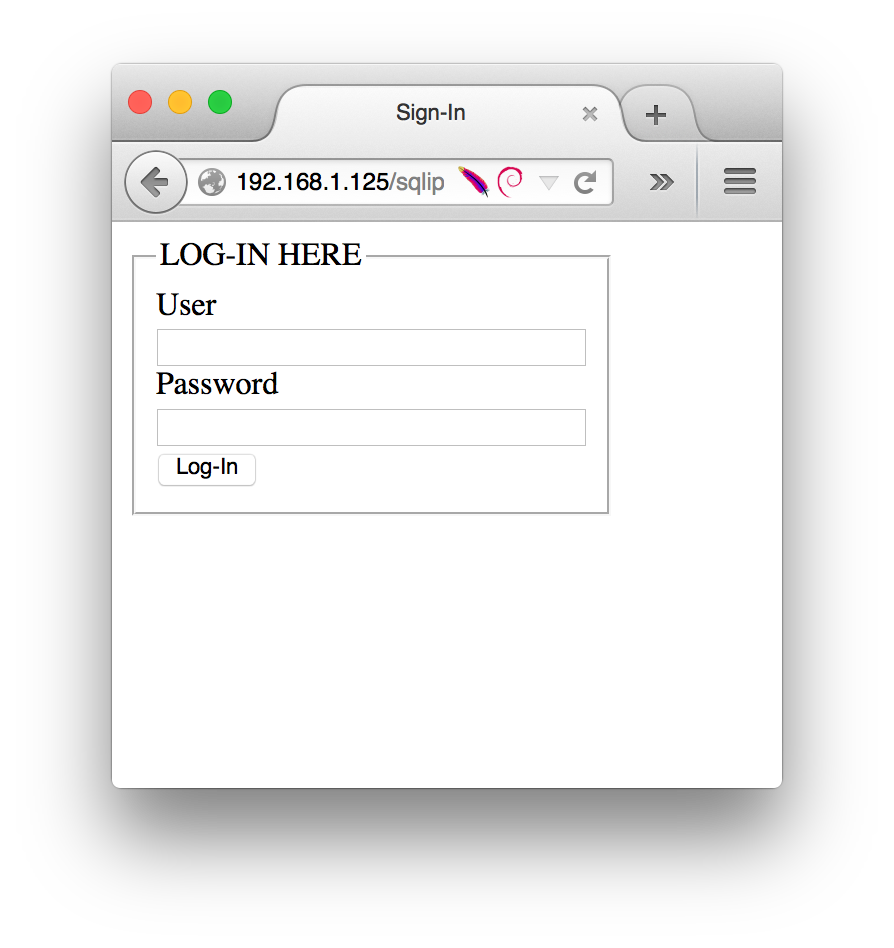
sqli-login
And is successfully logged in here: successful-login
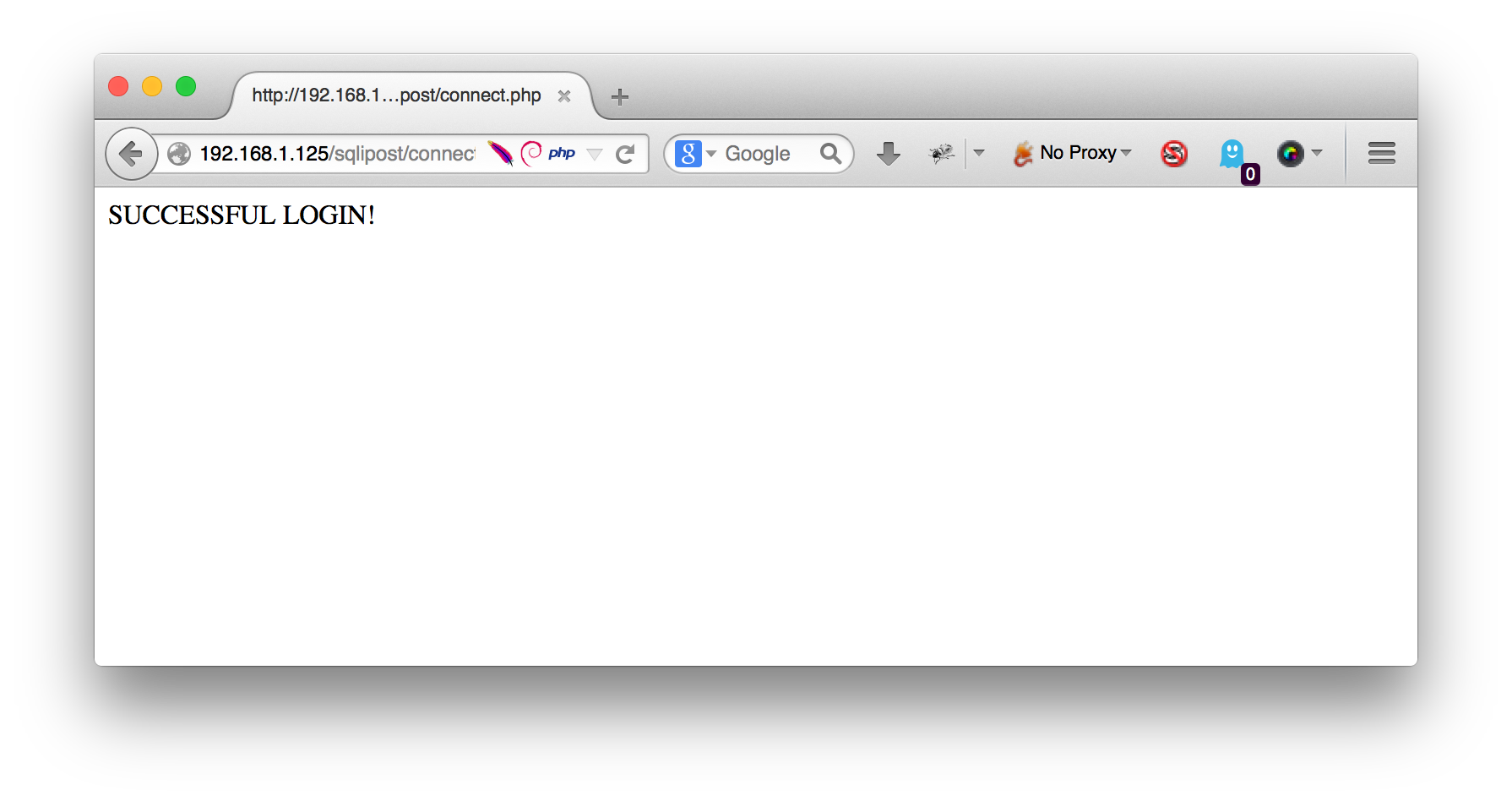
successful login
PHP’s ease of use and widespread popularity has lead to countless websites being developed in a similar fashion: slapdash and without much thought with security in mind. (My colleagues and I refer to them as “StackOverflow” sites) Besides the “POST is a secure method” chestnut from this site, what else is wrong with this code?
- The PHP file connects to MySQL using the “root” or superuser login.
- There is no sanitization of the data being passed into the “$query” variable - we’ll see how to exploit, then fix, this vulnerability shortly.
- The deprecated mysql_connect() function is being used - this is systemic of these slapdash tutorials: the easiest method to get things working is used, and even when the listed functionality has been deprecated, tutorials are often not revised.
How can this be exploited?
Injection Exploitation
Let’s focus on the core functionality of this code, this line here:
$query = mysql_query("SELECT * FROM UserName where userName = '$_POST[user]' AND pass = '$_POST[pass]'") or die(mysql_error());
This PHP code is telling the PHP CGI to take the value submitted by the user’s
browser, stored in $_POST[user] and pass it to the MySQL context using the
mysql_query() function. The MySQL context executes an instruction and returns
the result to $query At the start of this post, I said “Any context in which
an interpreter parses input to execute instructions is potentially vulnerable to
an injection attack.” This code fits the bill.
This code presents the user with the opportunity to inject valid SQL commands into the login page instead of a username or password, though Paul doesn’t realize this. We want to bypass the username requirement altogether. The application expects us to enter a username and password here:
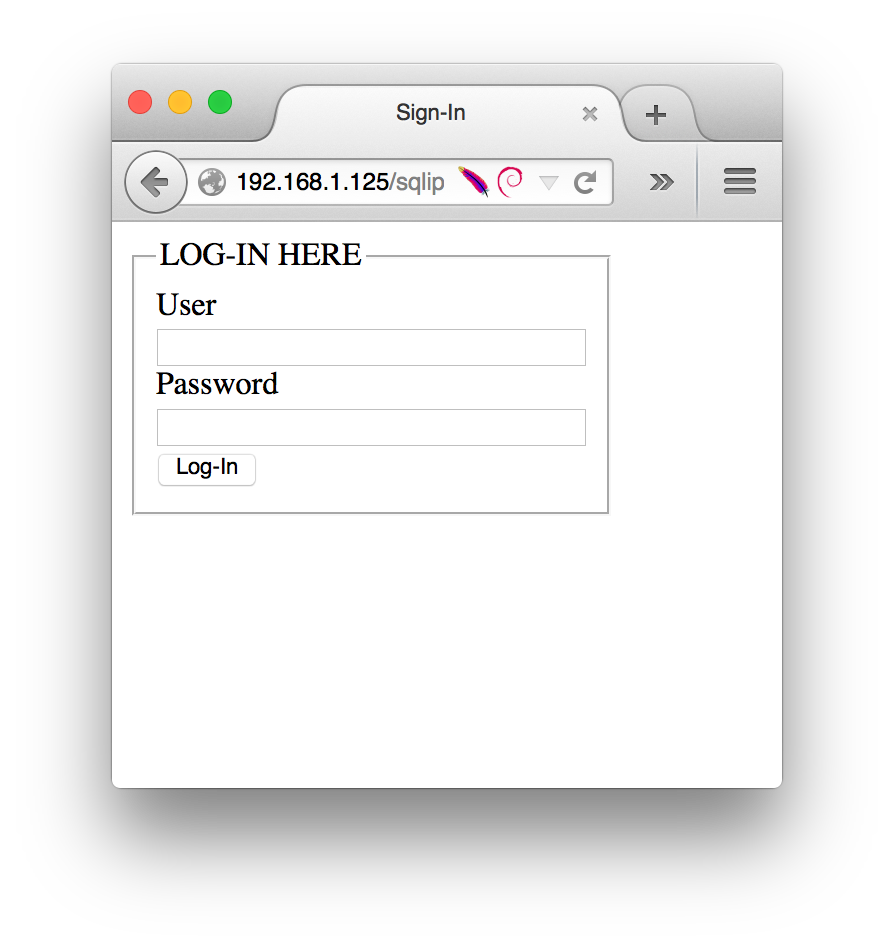
sqli login
Instead, let’s enter ’ or 1=1; –:
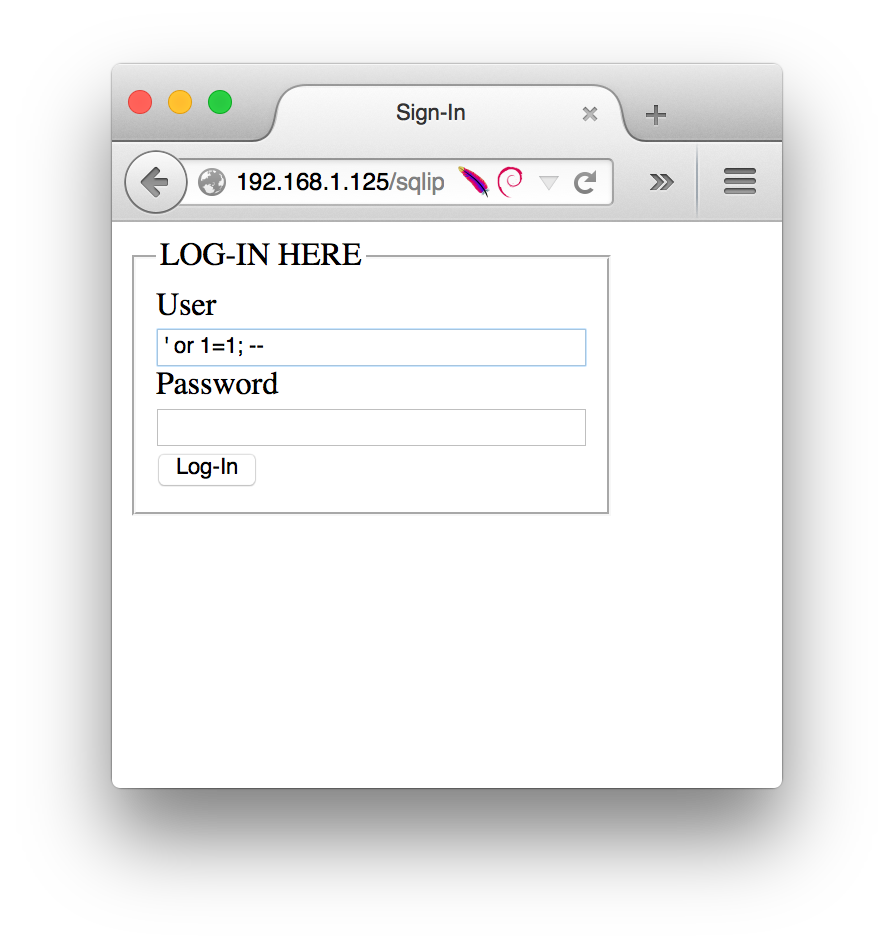
sqli login bypass
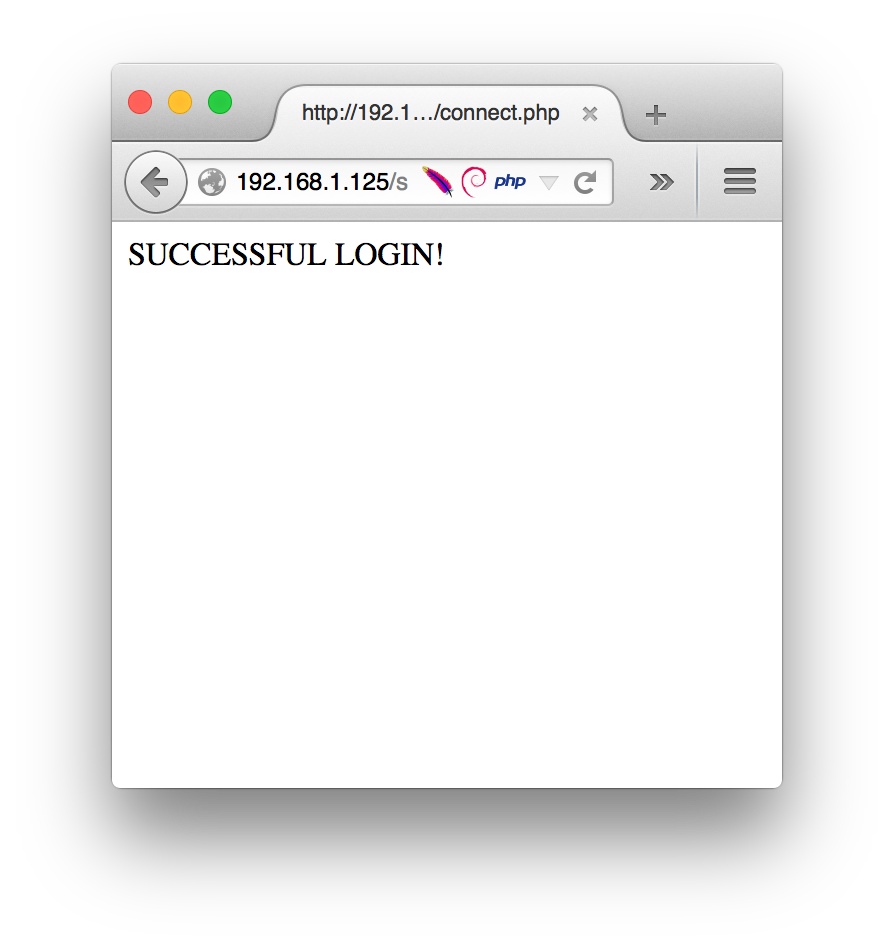
sqli-login-bypass-success
What we’ve done is injected a valid SQL command into the MySQL context,
through the PHP CGI. The PHP CGI sent the MySQL backend our injection through
the ancillary information stored in $_POST[user]. Paul only expected users to
enter valid usernames and passwords like “admin” and “supersecret” in the login
page. The PHP CGI stores these in the $_POST[user] and $_POST[pass]
variables, so Paul expected his application to send the MySQL server this query:
$query = mysql_query("SELECT * FROM UserName where userName = 'admin' AND pass = 'supersecret") or die(mysql_error());
Instead, our injection has sent the MySQL server this query:
$query = mysql_query("SELECT * FROM UserName where userName = '' or 1=1; -- AND pass = '') or die(mysql_error());
This is a valid query, so the MySQL context doesn’t throw an error up. The
condition or 1=1 always evaluates to true and the ; -- characters tell the
MySQL context that the query ends after 1=1 and the rest of the command is
commented out, invalidating it.
This is a classic, old-as-dust example of a SQL injection attack against PHP and MySQL, but it still works based on a tutorial written about one month ago. In 2014. These types of attacks are far too common!
Let’s Remediate This Injection
Following in the “easiest solution gets implemented” mindset I criticized this
vulnerable code of, Paul could add the addslashes() function to his code like
this:
$query = mysql_query("SELECT * FROM UserName where userName = . addslashes('$_POST[user]') . AND pass = . addslashes('$_POST[pass]')") or die(mysql_error());
Now, when we attempt to enter ' or 1=1; -- as the username, we are greeted
with the following error:
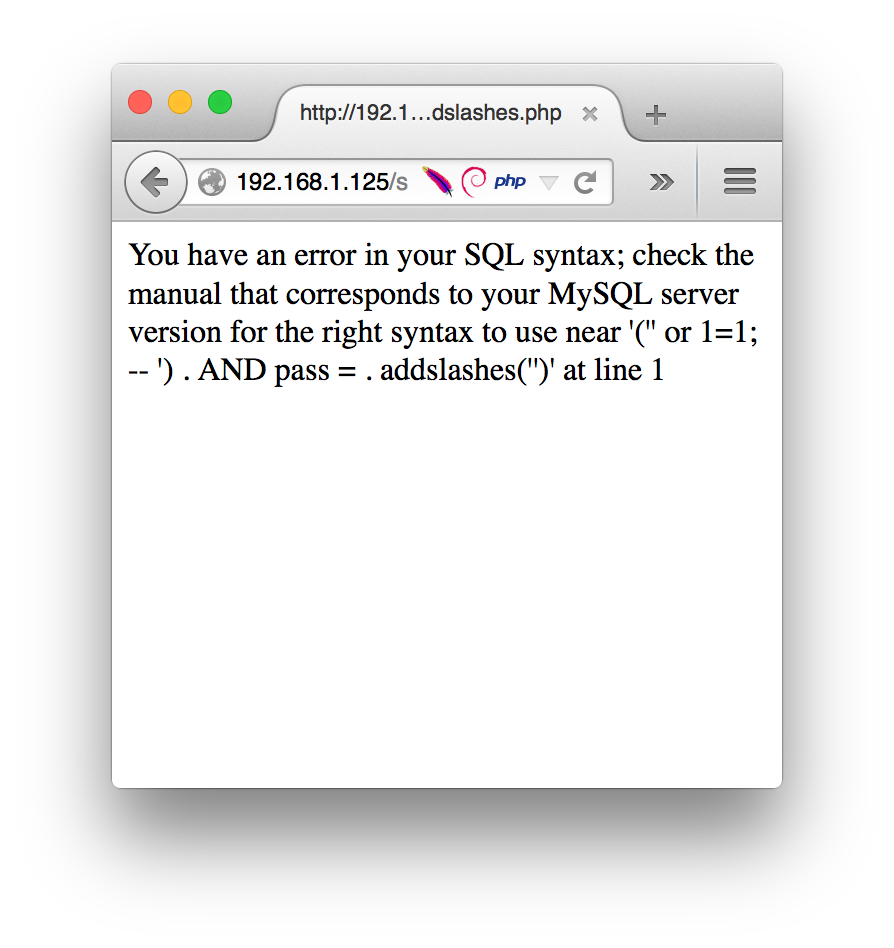
sqli addslashes
The easiest method isn’t the most complete, and I’ve already spent several paragraphs pointing this out.
A More Robust Solution: Prepared Statements using PDO
PHP Data Objects (PDO) is a robust database driver allowing PHP to communicate with several database backends, including MySQL. One of the key security features offered by PDO is the ability to create Prepared Statements. Prepared statements separate SQL code from data by building a valid SQL query (the code) and inserting data only into parameters specified by the developer. PDO takes a little more effort to construct, but Paul could just as easily use the following code to better implement his login:
<?php
$dbh = new PDO('mysql:host=localhost;dbname=test','root','');
$dbh->setAttribute(PDO::ATTR_EMULATE_PREPARES, false);
$dbh->setAttribute(PDO::ATTR_ERRMODE, PDO::ERRMODE_EXCEPTION);
$query = $dbh->prepare( "SELECT * FROM UserName WHERE userName = :username AND pass = :password");
$query->bindValue( ':username', $_POST['user'] );
$query->bindValue( ':password', $_POST['pass'] );
if( $query->execute() ) {
$num_rows = $query->fetchAll( PDO::FETCH_ASSOC );
}
echo '<pre>';
print_r( $num_rows );
echo '</pre>';
?>
Paul uses PDO to construct the SQL query and parameterizes the data he expects,
using the bindValue method. PDO thus constructs the executable portion of the
query as:
"SELECT * FROM UserName WHERE userName = :username AND pass = :password"
bindValue tells PDO that the values substituted for :username and
:password are the data portion of the query and are not to be treated as valid
SQL commands. As a bonus, PDO escapes the input it binds to :username and
:password, so even if we tried entering valid SQL commands, PDO would tell the
PHP CGI it has encountered an error and the attempted SQL injection will not
work.
Additional solutions for remediating this vulnerability in PHP include:
- [Using stored procedures][StoredProcedures]
- [Sanitizing user input][Sanitize User Input]
- [Database connectivity using “least privilege” principle][Least Priv]
- [White listing user input][Whitelist]
Combining several of these options would provide for the ideal defense-in-depth characteristic that would successfully help keep Paul’s site secure. However, no defense is perfect, and critical functionality - such as user login and authorization - should be reviewed periodically to ensure that the current best practices for defense are being applied. Implementing these defenses take time and expertise, two things Paul may or may not have, which is why so many vulnerable sites exist on the web.
Summary
I’ve discussed the history of several technologies that have brought the web to its current state, and the SQL Injection vulnerabilities present in one of the most influential. I hope this post has been educational to you, not just in the technique of SQL injection, but in providing some situational awareness so you can better understand how this rose to be the top attack against websites today.
[StoredProcedures]: https://www.owasp.org/index.php/SQL_Injection_Prevention_Cheat_Sheet#Defense_Option_2:_Stored_Procedures [Sanitize User Input]: http://codex.wordpress.org/Validating_Sanitizing_and_Escaping_User_Data [Least Priv]: https://www.owasp.org/index.php/SQL_Injection_Prevention_Cheat_Sheet#Least_Privilege [Whitelist]: https://www.owasp.org/index.php/SQL_Injection_Prevention_Cheat_Sheet#White_List_Input_Validation